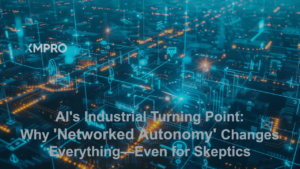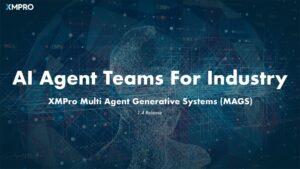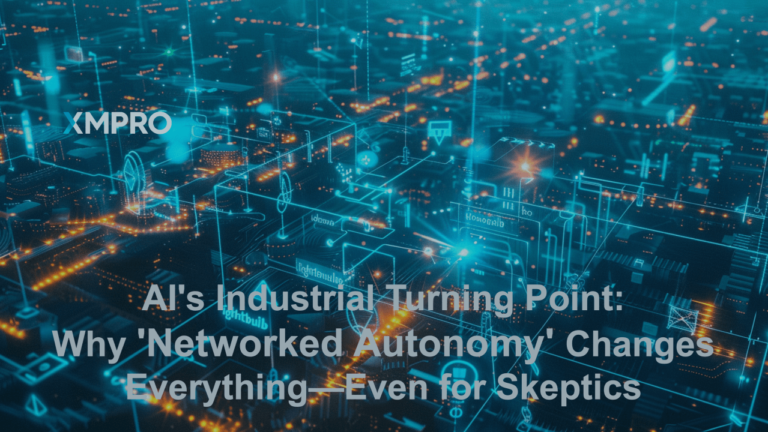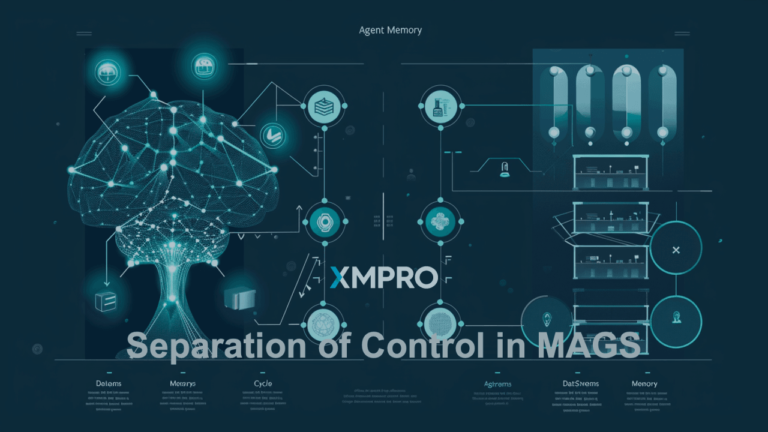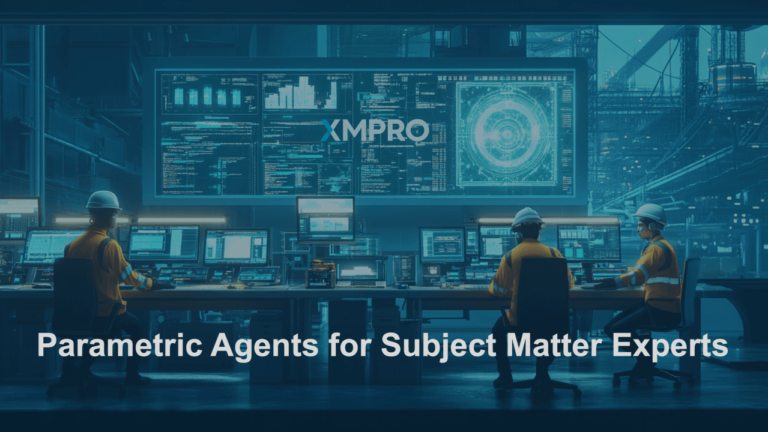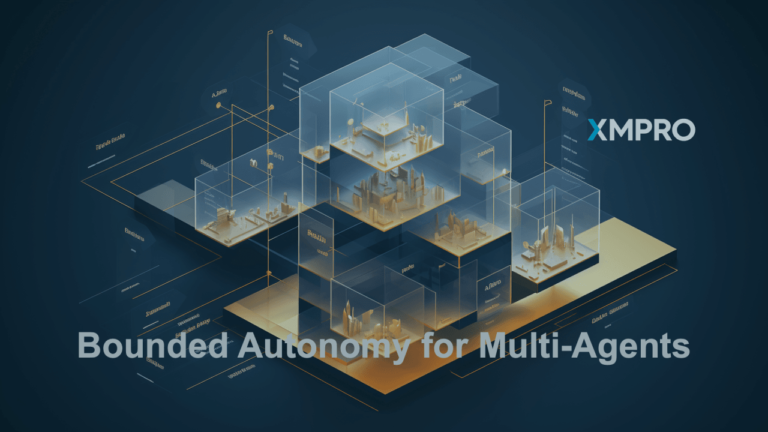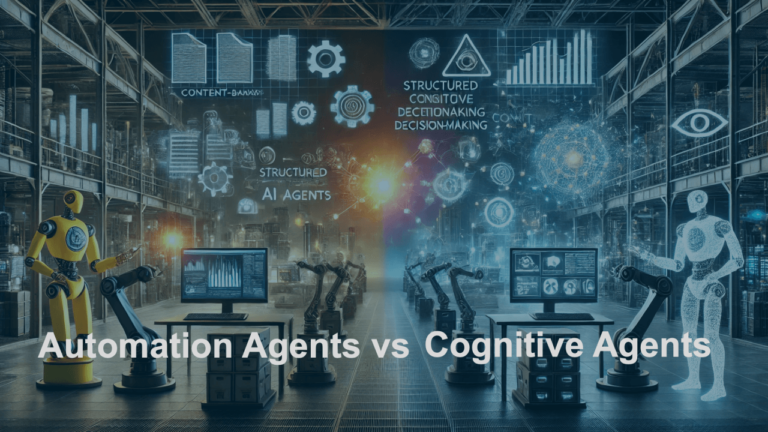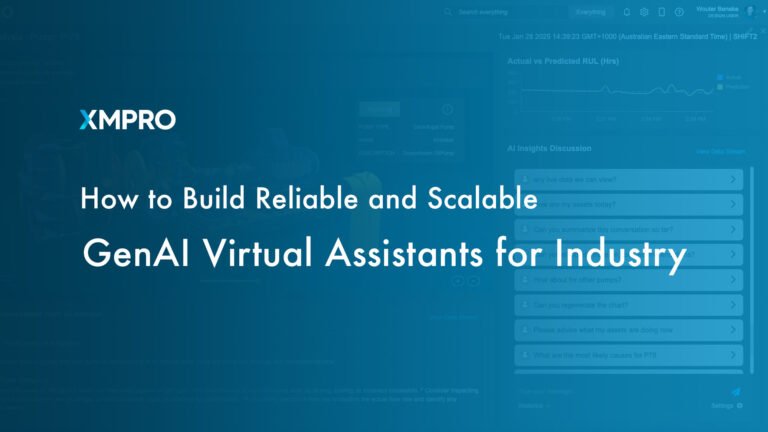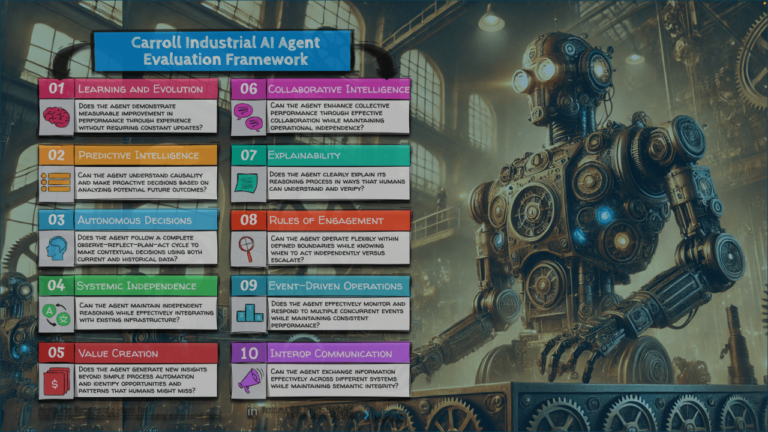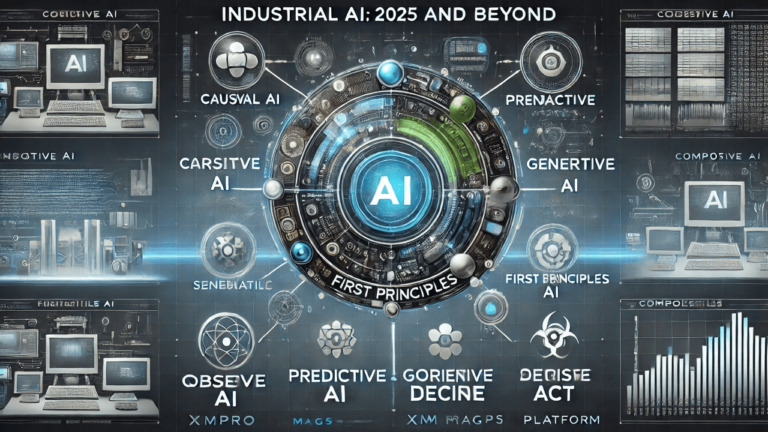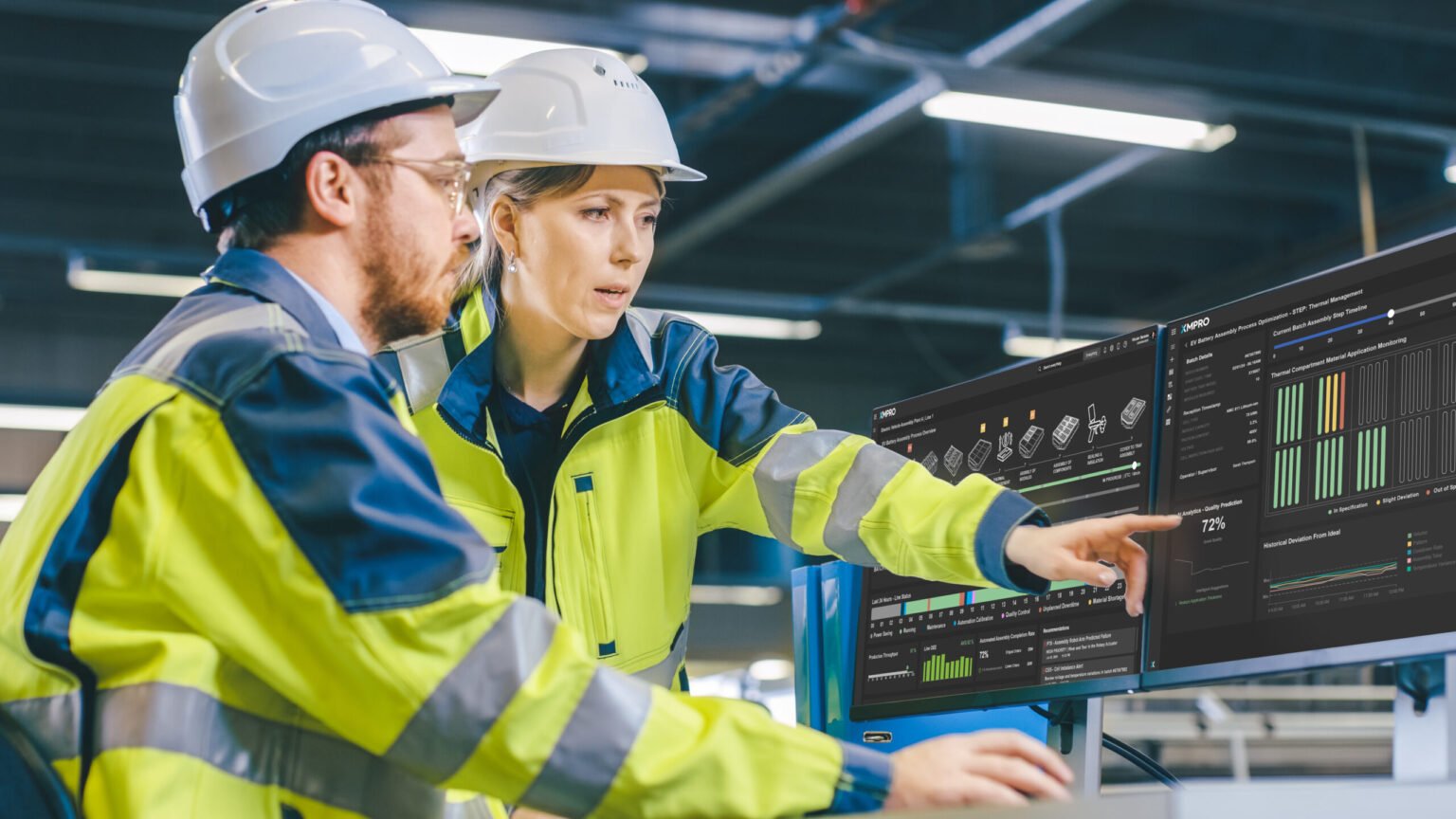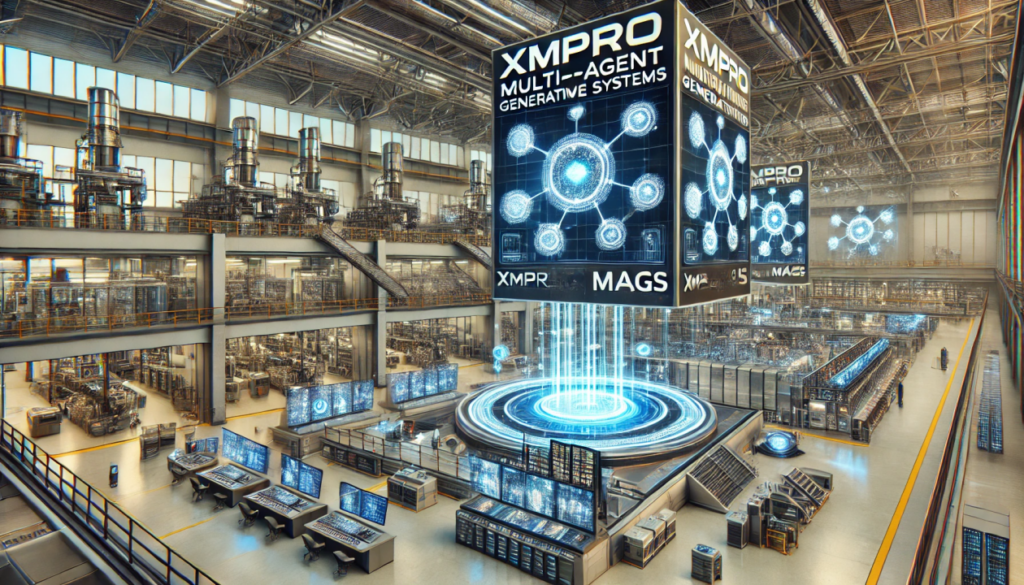Part2: The Future of Work: Harnessing Generative Agents in Manufacturing

Pieter Van Schalkwyk
CEO at XMPRO, Author – Building Industrial Digital Twins, DTC Ambassador, Co-chair for AI Joint Work Group at Digital Twin Consortium
June 26, 2024 – Originallly posted on Linkedin
In part 1 – From Railroads to AI: The Evolution of Game-Changing Utilities, I explained how the development and adoption of Generative AI mirrors the transformative impact of railroads, electricity, and the Internet, and why it is set to become the next game-changing utility driving our future.
Just as we needed machines and appliances to harness the electrical utility, we now need transformative applications to fully leverage the Generative AI Utility.
In part 2, I explore how Generative Agents represent the transformative application for GenAI capabilities, ready to revolutionize how we work.
Unlike current AI Assistants and Copilots that improve efficiency, Generative Agents will bring a step change—a fundamental shift in “how” we work. This transformation will be similar to how electrical appliances replaced manual tools, enhancing productivity, improving society, and elevating the quality of life for everyone.
As we stand on the brink of this shift, it’s important to understand the driving forces behind the need for change, the unique capabilities of Generative Agents, and how they operate. In this article, we will delve into three key focus areas:
- The compelling reasons why we need to change how we work
- How Generative Agents are uniquely positioned to facilitate the future of work
- A deeper dive into the mechanics of Generative Agents and how they function to bring about this transformation.
By exploring these areas, I hope to give you a glimpse of Generative Agents’ immense potential for redefining our work landscape.
Adapting to the Future: The Case for New Work Approaches
The evolving manufacturing landscape demands a significant shift in our work methods. Several key drivers necessitate this change:
1. Skills
The current labor market faces multiple challenges: rising labor costs, shortages of skilled workers, an aging workforce, and declining labor participation rates. These issues create a pressing need for businesses to find alternative solutions to maintain productivity and efficiency. Upskilling and reskilling the workforce to adapt to new technologies like AI, robotics, and advanced data analytics are crucial. Traditional manual labor skills no longer suffice to meet the demands of modern manufacturing.
2. Productivity
Despite technological advancements such as IoT and automation, manufacturing productivity has not significantly improved in recent years. Initial gains from integrating PCs with PLCs, the advent of the internet, and the introduction of communication standards like OPC DA and UA were substantial. However, productivity has plateaued despite further advancements. This stagnation suggests the need for new strategies and transformative approaches to reignite productivity growth and maximize the potential of current technologies.
3. Complexity of Manufacturing Processes and Systems
The increasing complexity of modern manufacturing systems poses significant challenges. Automation, robotics, AI, and IoT integration require advanced technical skills and continuous learning. Effective data management and analysis are essential for process optimization and decision-making. Additionally, achieving interoperability among various systems and technologies, managing global supply chains, and maintaining high-quality control standards demand a shift towards more sophisticated and knowledge-intensive work practices.
Let’s explore each of these in more detail.
Driver 1 – Navigating the Shift: Addressing Labor Challenges in Manufacturing and Logistics
The evolving landscape of manufacturing and logistics is driving a significant shift in the required skill sets for frontline workers. Due to labor shortages, industry analysts project that by 2028, there will be more smart robots than frontline workers in these industries. This transition applies to physical and digital robots or agents that will augment the manufacturing workforce.
1. Labor Challenges and Statistics
According to analyst research, labor has become as significant a constraint on operational performance as product availability. The U.S. workforce is expected to grow nearly five times slower than the U.S. GDP over the next decade, with the GDP projected to grow at 2.5% while the overall workforce will grow only 0.5%. Specifically, manufacturing and retail workforces are expected to shrink by 0.1% and 0.4%, respectively.
2. Aging Workforce
By 2030, the U.S. Department of Labor expects that one-quarter of the U.S. workforce will be over 65 years of age. This trend is also evident in Europe and parts of Asia, indicating a global challenge. Manufacturing faces an image problem, with many younger generations perceiving these jobs as outdated, boring, and lacking creativity. This negative perception and the widespread labor shortage make it challenging to attract and recruit new talent to fill the positions left by retirees.
3. Declining Labor Participation Rates
U.S. labor participation rates are projected to decline from 67% in 2000 to 60.4% in 2030. This decline increases the labor shortages faced by various industries. LNS Research found by comparing 2019 vs. 2023 manufacturing employment data that there is a declining workforce tenure: The average tenure of employees in manufacturing has decreased from 20 years in 2019 to only three years in 2023. This means that manufacturers are dealing with a less experienced workforce.
4. Evolving Skill Requirements
The rapid pace of technological change in manufacturing means that the required skills constantly evolve. This makes finding candidates with the right expertise challenging and necessitates continuous upskilling and training efforts.
Retaining these upskilled workers is a further challenge in this competitive labor market. LNS further found in their comparison of 2019 and 2023 labor statistics that there is a high employee turnover: 50% of new employees leave manufacturing roles within the first 90 days. The 90-day retention rate in 2019 was 90%.
This turnover rate further exacerbates the issue of a less experienced workforce and puts additional pressure on manufacturers to improve onboarding and training processes.
Driver 2 – Rethinking Efficiency: Addressing the Productivity Plateau in Manufacturing
Despite significant advancements in IoT and automation, manufacturing productivity has not seen substantial improvements in recent years. According to the U.S. Bureau of Labor Statistics, labor productivity in the manufacturing sector, measured as output per hour for all workers, has plateaued.
I saw this initially in a LinkedIn article by Michael Carroll. If you want to see how the numbers stack up, you can explore the source for yourself here.
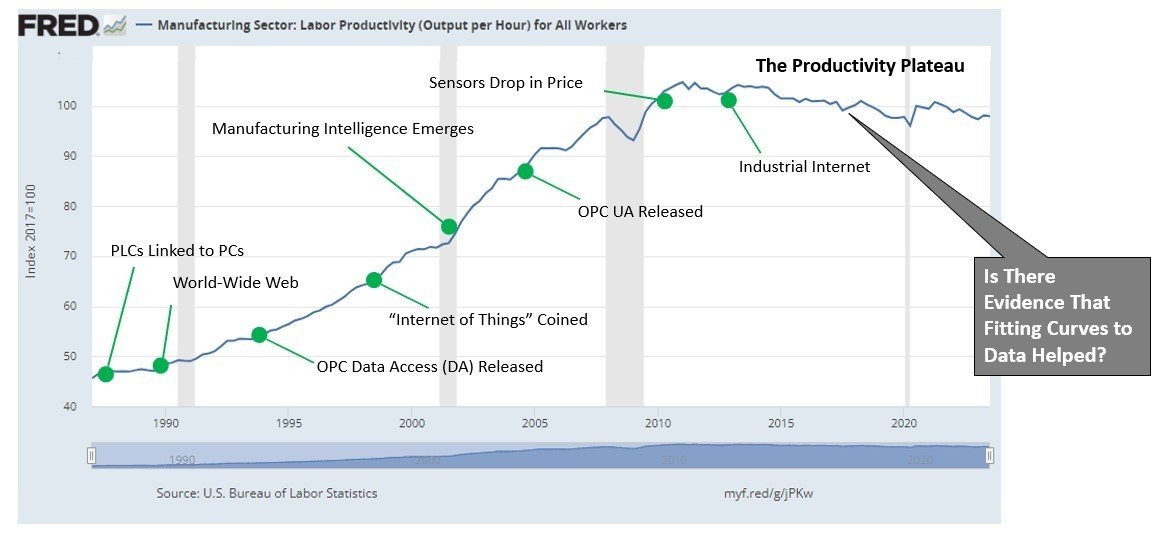
Michael marked up the graph with the evolution of manufacturing technologies. It is a great read, and you will find it here.
Over the past several decades, the manufacturing sector has witnessed significant shifts in productivity driven by technological advancements. From the 1990s to the mid-2000s, manufacturing productivity saw substantial gains due to the integration of Programmable Logic Controllers (PLCs) with PCs, the advent of the Internet, and the emergence of the Internet of Things (IoT), which improved communication, data collection, and automation.
Further advancements included manufacturing intelligence combining data analytics with automation, decreasing sensor costs, and the release of OPC Unified Architecture (UA), which enhanced system interoperability. However, despite these continuous technological advancements, productivity growth has plateaued post-2010, indicating diminishing marginal gains or counteracting factors.
1. Reimagining Workflows for Enhanced Productivity
Despite recent innovations, the manufacturing sector has encountered a plateau in productivity growth. This stagnation suggests that the benefits of new technologies are becoming less pronounced or other challenges are counteracting potential gains.
To address this issue, we must rethink how we work. Productivity is measured by worker output per hour, and to significantly improve this, we need to enable workers to produce more with less of their own time and resources.
Reimagining business processes to include Generative Agents that handle repetitive, high-volume tasks provides a pragmatic solution to the productivity problem. New strategies and breakthroughs are essential to break through this plateau and drive future productivity growth.
Driver 3 – Addressing Complexity in Today’s Manufacturing Processes
The increasing complexity of manufacturing systems and tasks poses several challenges that require a shift in how work is approached. Here are the main challenges:
1. Automation and Technology Integration
Modern manufacturing relies heavily on automated systems, robotics, computer-controlled machinery, and advanced technologies like IoT, AI, and data analytics.
This integration requires a workforce with technical skills, problem-solving abilities, and continuous learning capabilities. Traditional manual labor is insufficient to meet these demands.
Think of all the screens in a modern control room or smart factory where an operator must monitor multiple process variables to optimize production in real-time. Or all the data from multiple sensors that a reliability engineer needs to analyze in real-time to reduce downtime as the competitive pressure is on businesses to operate “at the speed of thought,” as Bill Gates predicted in 1999.
2. Data Management and Analysis
The vast amounts of data generated by sensors, machines, and systems demand robust data management practices and advanced analytics capabilities. Extracting actionable insights for process optimization, forecasting, and decision-making is crucial for maintaining a competitive advantage.
3. Integration and Interoperability
Integrating and interoperability between various systems, equipment, and software applications is a significant challenge. Manufacturing operations involve a wide range of modern and legacy systems from different manufacturers with varying data formats and communication protocols.
Additionally, the rapid advancement of technology has created a skill gap, with a shortage of professionals proficient in data analytics, cybersecurity, cloud computing, AI, and robotics. Upskilling and reskilling the existing workforce to adapt to technological changes is crucial.
The Future of Work: How Generative Agents Can Help
A generative agent is an advanced AI entity designed to autonomously recognize patterns, generate predictions, and perform tasks by emulating human reasoning. Unlike traditional computational software, generative agents are trained on extensive data sets to understand context and make informed decisions. They can process large amounts of data, adapt to new information, and optimize workflows, making them valuable for automating complex processes and enhancing productivity across various applications.
Generative Agents are set to revolutionize the future of work by leveraging their unique capabilities. To understand their value, consider Generative AI as a utility, similar to electricity, which powers various applications. Generative Agents are like the appliances and machines that use this “electricity” to create products, improve quality of life, and provide the end-user value.
Here’s how they can help:
1. Reasonable vs. Computational
Human-Like Reasoning
Generative Agents are trained to recognize and predict patterns, allowing them to emulate human reasoning with high accuracy. They can make decisions and provide insights that mirror human thought processes, making them more adaptable and intuitive in dynamic work environments.
Enhanced Predictions
By using “external” computational tools, Generative Agents can enhance the accuracy of their predictions. They combine the strengths of both pattern recognition and computational logic to deliver precise and actionable insights.
2. Speed, Accuracy, and Repeatability
Greater Accuracy
Generative Agents can process vast amounts of data and identify patterns faster than humans. This capability allows them to provide more accurate predictions and recommendations, improving decision-making and efficiency.
Speed
With their ability to process information quickly, Generative Agents can offer real-time solutions and responses, enhancing productivity and reducing workflow delays.
Repeatability
Unlike humans, Generative Agents can perform repetitive tasks with consistent accuracy. This repeatability ensures high-quality outcomes and reduces the risk of errors.
3. Integration with Computational Tools
Hybrid Approach
Generative Agents and computational machines operate in different approaches but can complement each other. While computational AI and applications excel at executing complex mathematical calculations at scale, Generative Agents excel at pattern recognition and predictive reasoning.
Combined Capabilities
Organizations can harness the best of both worlds by integrating Generative Agents with computational tools. It further “grounds” GenAI in physics and the laws of nature. It reduces hallucinations as it can be fact-based but with reasoning capabilities. This hybrid approach enhances productivity and enables more sophisticated real-world analysis and problem-solving.
Generative Agents are not just another form of computational software. Their ability to emulate human reasoning, combined with computational tools, makes them powerful allies in the future of work. They enhance accuracy, speed, and repeatability, providing a hybrid approach that leverages the strengths of both pattern recognition and computational logic. By doing so, Generative Agents significantly improve the productivity and efficiency of our work output.
The Evolution of Agent Approaches in Work and Task Types
As work and task types evolve, so do the approaches to implementing AI and automation in business processes. The progression from simple rule-based systems to sophisticated multi-agent generative systems highlights how different levels of AI and automation capabilities align with varying work objectives.
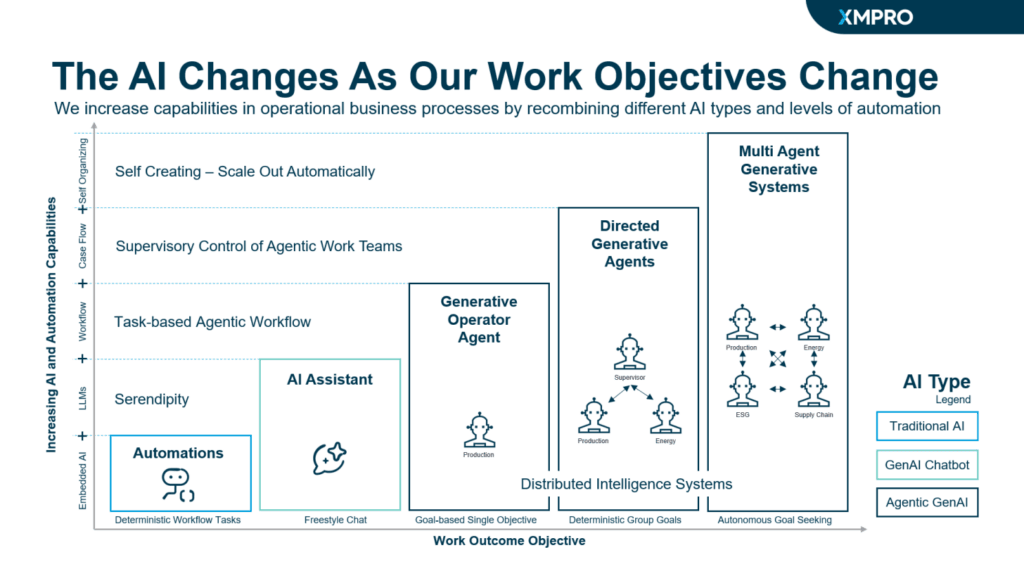
XMPro Evolution of Agentic Business Processes
Rule-Based Process Automation
Before using AI for workflow planning, automation relied on rule-based process automation, which was extended to Robotic Process Automation (RPA), which performs deterministic workflow tasks. These automations are highly structured, following predefined rules to complete repetitive tasks with consistency and accuracy.
AI Assistants and Co-Pilots
With advancements in AI, the introduction of AI Assistants and Co-Pilots marked a significant shift. Utilizing large language models (LLMs), these systems can handle freestyle chat and more dynamic interactions, providing support and enhancing productivity by assisting with routine tasks and decision-making processes.
Task-Based Agentic Workflow
As business needs grow more complex, the evolution towards task-based agentic workflows continues. Single generative agents are capable of handling specific tasks autonomously. These generative operator agents can focus on goal-based single objectives, such as optimizing production processes or managing energy resources.
Supervisory Control of Agentic Work Teams
For more complex scenarios, supervised agentic work teams are used. Directed generative agents operated under a supervisory structure, where a central agent coordinated the efforts of multiple agents working towards deterministic group goals. This setup allows for better management of interdependent tasks and improved efficiency in achieving collective objectives.
Multi-Agent Generative Systems (MAGS)
The most advanced approach is the deployment of Multi-Agent Generative Systems (MAGS). These systems consist of numerous autonomous agents collaborating within a shared framework to achieve autonomous goal-seeking. MAGS can handle distributed intelligence systems, managing intricate processes like production, energy management, ESG (Environmental, Social, and Governance) compliance, and supply chain operations. Each agent has a defined role, and they work together to deconstruct and solve complex problems, mimicking real-world team dynamics.
Tailoring Solutions to Business Process Requirements
It’s important to note that not all business processes require the complexity of complete multi-agent systems. Depending on the specific needs and objectives, organizations can implement varying levels of AI and automation:
- For Routine and Structured Tasks: Rule-based RPA and AI Assistants are often sufficient.
- For Goal-Based Objectives: Single generative agents can effectively manage individual tasks.
- For Collaborative Workflows: Directed generative agents with supervisory control provide an efficient solution.
- For Highly Complex and Distributed Processes: MAGS offers the necessary capabilities to handle large-scale, integrated operations.
The evolution from rule-based automation to sophisticated multi-agent generative systems reflects the increasing complexity and diversity of modern business processes. By choosing the appropriate level of AI and automation, organizations can optimize their operations and enhance productivity across various tasks and objectives.
What is Multi-Agent Generative Systems (MAGS)?
Multi-agent generative Systems (MAGS) represent an advanced integration of computational software agents and large language models (LLMs) designed to simulate and optimize complex industrial processes and interactions. MAGS leverages generative AI to create dynamic, adaptive systems that enhance productivity, efficiency, and decision-making across various operational aspects.
Key Characteristics:
- Integration of LLMs and Agent Technology: MAGS combines the reasoning capabilities of LLMs with the interactive and adaptive nature of software agents.
- Complex Environment Simulation: They can simulate intricate environments where multiple agents interact, make decisions, and influence each other.
- Emergent Behavior: Through agent interactions, MAGS generate emergent behaviors that may not be predictable from individual agent characteristics alone.
- Memory and Reflection: Agents within MAGS can record observations, reflect on past experiences, and use this information to inform future actions.
- Adaptive Decision Making: Agents can create and modify plans to achieve goals, adapting to changing circumstances in their environment.
- Multi-modal Capabilities: MAGS are evolving to incorporate multiple modalities, including text, image, audio, and video, enhancing their ability to interact with and understand complex environments.
As Multi-Agent Generative Systems (MAGS) evolve, they promise to provide unprecedented insights into complex systems, enabling more accurate predictions, better decision-making, and innovative problem-solving approaches across multiple industries and scientific disciplines.
Think of MAGS as the appliance in the electricity utility analogy from the start of this article. MAGS will not simply replace current tasks but expand their use by unlocking new opportunities.
Like the seafarers who discovered new lands despite the maps warning “There Be Dragons,” venturing into this new territory brings immense potential to enhance the quality of life for everyone.
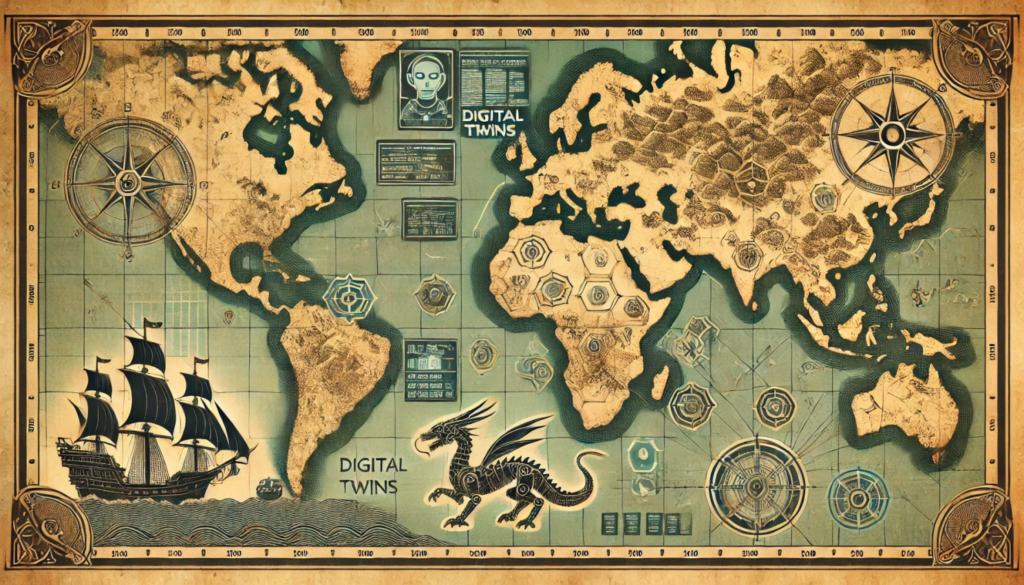
In Part 3, “AI at the Core: LLMs and Data Pipelines for Industrial Multi-Agent Generative Systems”, we will explore specific examples of MAGS applications with XMPro and practical use cases.
If this excites you and you want to be part of the next evolution in manufacturing, please reach out.
We are opening limited pilot opportunities for innovative, agile leaders in the industry.







